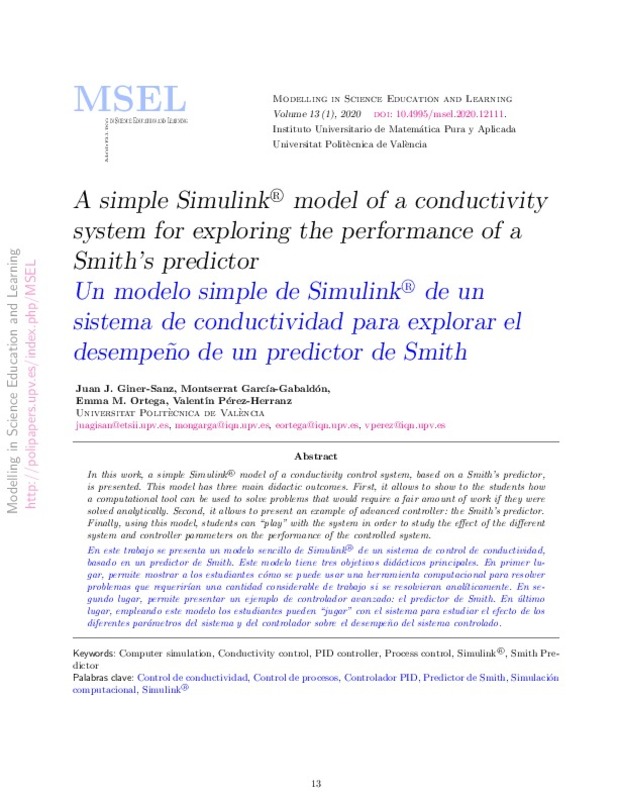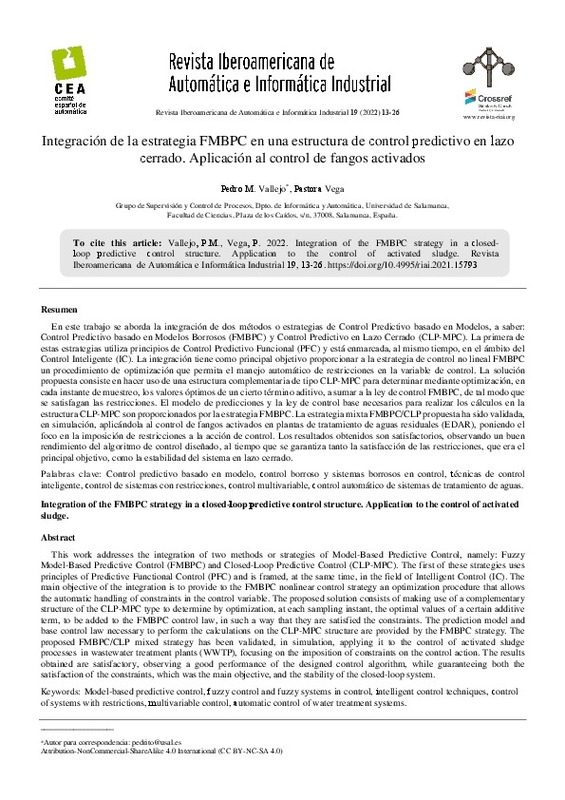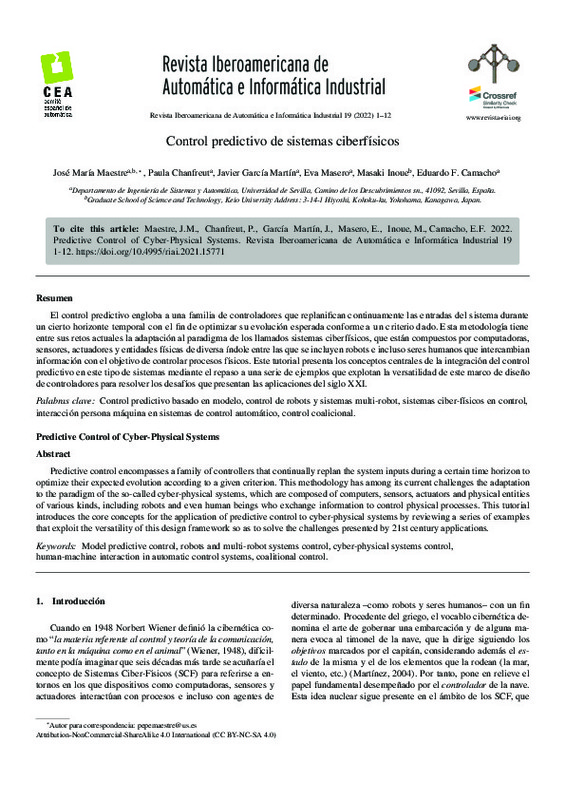JavaScript is disabled for your browser. Some features of this site may not work without it.
Buscar en RiuNet
Listar
Mi cuenta
Estadísticas
Ayuda RiuNet
Admin. UPV
A simple Simulink® model of a conductivity system for exploring the performance of a Smith’s predictor
Mostrar el registro completo del ítem
Giner-Sanz, JJ.; García Gabaldón, M.; Ortega Navarro, EM.; Pérez Herranz, V. (2020). A simple Simulink® model of a conductivity system for exploring the performance of a Smith’s predictor. Modelling in Science Education and Learning. 13(1):13-20. https://doi.org/10.4995/msel.2020.12111
Por favor, use este identificador para citar o enlazar este ítem: http://hdl.handle.net/10251/138455
Ficheros en el ítem
Metadatos del ítem
| Título: | A simple Simulink® model of a conductivity system for exploring the performance of a Smith’s predictor | |
| Otro titulo: |
|
|
| Autor: | ||
| Entidad UPV: |
|
|
| Fecha difusión: |
|
|
| Resumen: |
[EN] In this work, a simple Simulink® model of a conductivity control system, based on a Smith’s predictor, is presented. This model has three main didactic outcomes. First, it allows to show to the students how a computational ...[+]
[ES] En este trabajo se presenta un modelo sencillo de Simulink de un sistema de control de conductividad, basado en un predictor de Smith. Este modelo tiene tres objetivos didácticos principales. En primer lugar, permite ...[+]
|
|
| Palabras clave: |
|
|
| Derechos de uso: | Reconocimiento - No comercial (by-nc) | |
| Fuente: |
|
|
| DOI: |
|
|
| Editorial: |
|
|
| Versión del editor: | https://doi.org/10.4995/msel.2020.12111 | |
| Código del Proyecto: |
|
|
| Agradecimientos: |
|
|
| Tipo: |
|












